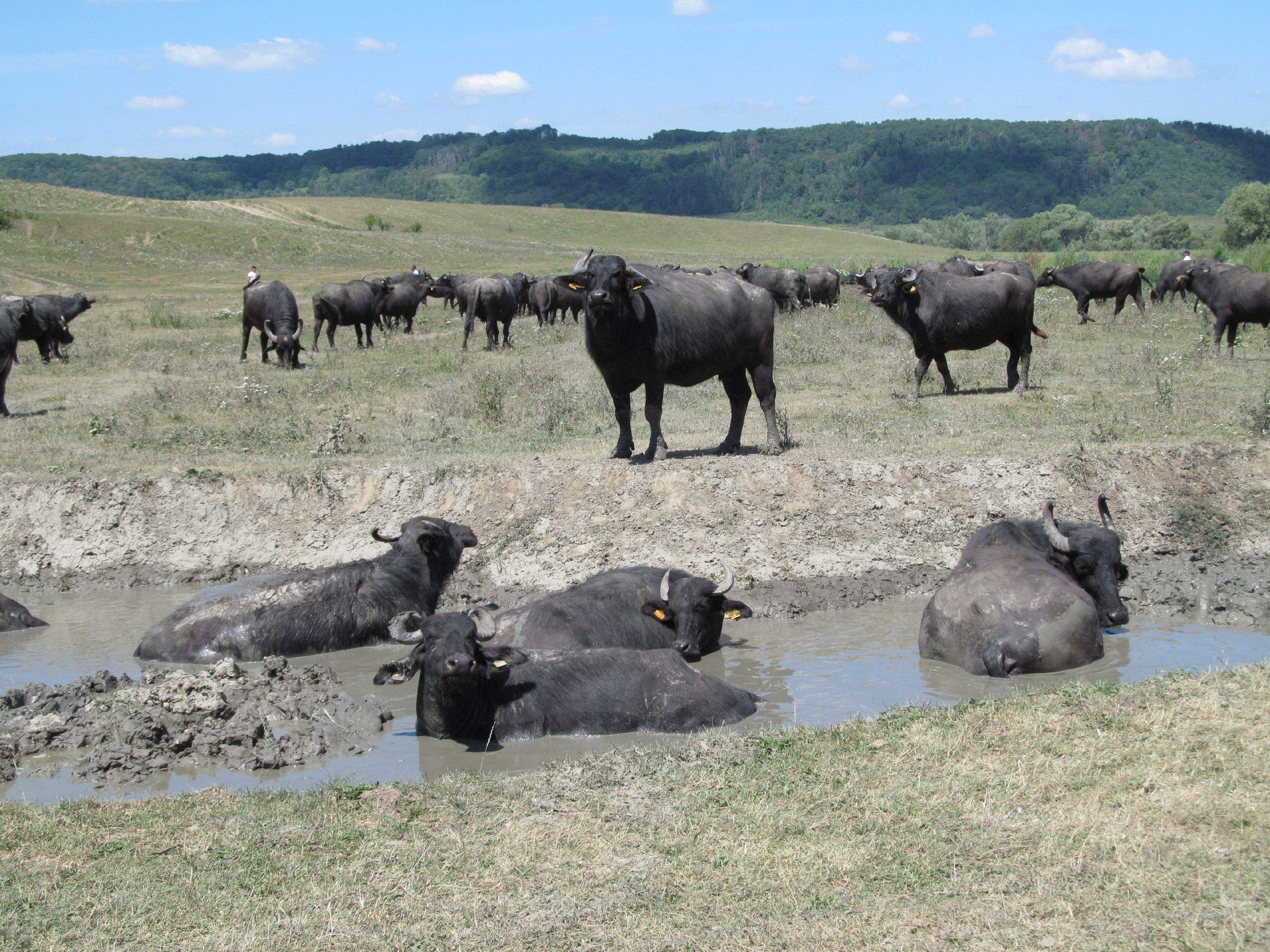
Buffalo mozzarella: a premium product with hidden cruelty
Recent FOUR PAWS investigation shows still dreadful conditions on Italian farms
Buffalo mozzarella is a popular 'premium' product around the world. However, mozzarella consumers are often unaware of the circumstances under which the cheese is produced.
FOUR PAWS exposes the keeping conditions of calves and of adult buffaloes in the main region of production of buffalo mozzarella in Italy. Already in 2014, FOUR PAWS brought attention to the fate of male calves in the mozzarella production as well as the keeping conditions and treatment of the female adult animals.
This year, a follow-up research reveals that buffalo keeping is still far away from being 'premium'. Again, investigations show shocking and disturbing material with mistreated calves locked up in single concrete boxes and adult buffaloes being housed in dirty stables with overgrown hooves resulting in restricted and painful movement.
The problem
Due to the steadily increasing demand for buffalo mozzarella, buffalo farming became more intensified over the last decades. The buffaloes are housed in stable structures which are often not equipped for the wellbeing of the animals and do not allow the natural needs of water buffaloes to be met. In addition, there is often no daylight access, the stables are dirty, and instead of dry, clean lying surfaces and enough bedding, the animals stand ankle-deep in their excrements. If there is access to pasture, then it might be overgrazed, and often there is no water available and no protection from high solar radiation and heat. Moreover, the possibility to bathe in water and mud – which is essential for healthy temperature regulation of the animals – is often not given. Many animals are malnourished due to incorrect and inadequate nutrition or poor health.
Inadequate stable structures, inappropriate management of the animals, early weaning, and social isolation of the calves lead to behavioural disorders and sometimes to illness.
FOUR PAWS’ demands
FOUR PAWS demands from all the stakeholders in the buffalo mozzarella industry – namely the Consorzio Tutela Mozzarella di Bufala Campana, the farming associations, such as Coldiretti and Cia – Agricoltori Italiani, as well as the Ministry of Health (Ministero della Salute) – to assume responsibility for the welfare of the buffaloes.
Besides, supermarkets and retailers selling buffalo mozzarella are called on to ensure the wellbeing of the animals in their supply chain. Due to their market power, supermarkets and retailers have a crucial role in enabling more animal welfare. They can demand the compliance with mandatory animal welfare criteria and require regular and independent audits to be carried out.
What happened since the FOUR PAWS exposures in 2014?
In summer 2014, FOUR PAWS published footage from the Italian province of Campania and revealed that buffalo mozzarella – mostly perceived as a premium product – was not produced under premium conditions. The situation of the male calves was the biggest animal welfare problem, showing day-old male calves being left to die. In the same year, FOUR PAWS prepared a set of demands in line with and beyond the EU-wide regulation for buffalo farming and called on supermarket chains across Europe to use them when sourcing their mozzarella. The demands included criteria such as ending the illegal killing of the male calves, regular audits, appropriate care and veterinary treatment, access to outdoor mud baths or indoor spray systems, and permanent access to clean drinking water.
After the campaign, supermarkets have taken some considerable leaps forward, adopting the FOUR PAWS buffalo criteria, while some producers in Italy voluntarily improved the keeping conditions of buffaloes. Still, there is a long way to go in order to assure that the premium product buffalo mozzarella is produced under premium standards.
Water buffalo and their needs
Water buffaloes belong to the biological family of the Bovidae – as do dairy cows. Nevertheless, water buffalo do have different needs and behavioural patterns when as compared to cattle.
As the origins of the Mediterranean buffalo lie in hot areas, these animals have morphological adaptations to this kind of climate. They have melanin-pigmented skin (a protection against UV-rays) and less dense hair, which allows better heat dissipation. In hot-dry climates, evaporative heat loss is insofar restricted in buffalo as they have few sweat glands. Furthermore – in the same climate - evaporation through respiration in buffalo is not as effective as in cattle. In hot and humid climates evaporation to dissipate heat is not overly effective as the changes of air temperatures are small. Therefore, buffalo rely on wallowing for thermoregulation by additionally increasing the blood volume and flow to the skin for easier heat dissipation.




